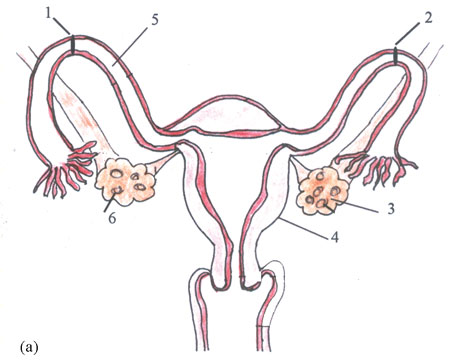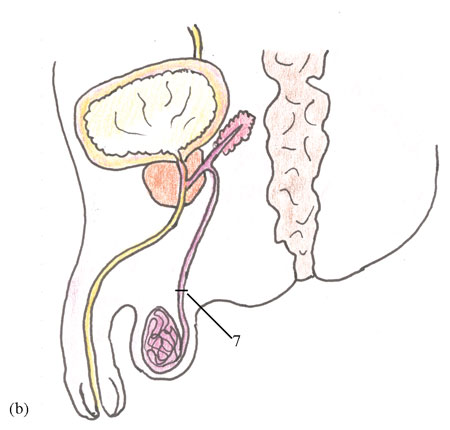Self-Assessment Questions (SAQs) for Study Session 9
Now that you have completed this study session, you can assess how well you have achieved its Learning Outcomes by answering these questions. Write your answers in your Study Diary and discuss them with your Tutor at the next Study Support Meeting. You can check your answers with the Notes on the Self-Assessment Questions at the end of this Module.
SAQ 9.1 (tests Learning Outcome 9.2)
A 23-year-old, unmarried man has come to your health post to get information on permanent contraceptive methods. At the moment he is not sure whether he would like to have children in the future.
What would you tell him concerning VSC?
Answer
Your answer should include some of these questions:
- Can you tell me why you want to have VSC?
- You are only 23 years old, which is very young to have VSC. Do you realise it is a permanent method of contraception?
- Do you have a partner? If so, does your partner want to have children in the future?
- Do you already have a family? If not, are you sure you won’t want to have children in the future? If yes, are you sure you won’t want to have more children in the future?
- Do you think you might change your mind later? What might change your mind? For example, suppose one of your children died? Suppose you lost your spouse and you married again?
- VSC is irreversible. Have you thought about other contraceptive methods?
Your client may need encouragement to further consider his decision about sterilisation. As a provider, you can advise your client about other methods of contraception, and help him make an informed choice.
Ultimately, the decision about sterilisation belongs to the client alone. A man or woman may consult a partner and others about the decision to have sterilisation, and may consider their views, but the decision cannot be made for them by a partner, another family member, a healthcare provider, a community leader, or anyone else. It is your duty to make sure that the decision for or against sterilisation is made by the client and is not pressured or forced by anyone.
SAQs 9.2 to 9.5
These SAQs are based on Figures 9.3 and 9.4 in this study session. You may also find it helpful to refer to Study Session 3 in the Antenatal Care Module.


SAQ 9.2 (tests Learning Outcome 9.3)
Name structures 4 and 5 in Figure 9.5(a) and describe their function with regard to fertilisation.
Answer
Structure 4 in Figure 9.5(a), is the uterus. Its function is receiving the fertilised ovum and creating a favourable environment for the fetus to develop.
Structure 5 in Figure 9.5(a), is the right fallopian tube. Its main function is hosting fertilisation and transporting the fertilised egg to the inner part of the uterus, where implantation takes place.
SAQ 9.3 (tests Learning Outcome 9.3)
What will happen if structures 1 and 2 in Figure 9.5(a) are blocked?
Answer
If the pathway at structures 1 and 2 in Figure 9.5(a) is blocked it will result in female sterilisation. The blocks prevent the sperm from reaching an egg, and as a result fertilisation and implantation will not take place.
SAQ 9.4 (tests Learning Outcome 9.3)
What will happen to 6 if the pathway is blocked at 1 and 2 in Figure 9.5(a)?
Answer
If the pathway at structures 1 and 2 in Figure 9.5(a) is blocked then the eggs (structure 6.) will remain in the fallopian tube and be reabsorbed by the body. Sterilisation does not usually affect hormone levels and the ovaries will continue to release eggs as part of the normal menstrual cycle.
SAQ 9.5 (tests Learning Outcomes 9.3, 9.5 and 9.6)
Discuss the advantages and disadvantages of blocking structure 7 in Figure 9.5(b)?
Answer
Blocking structure 7 (left sperm tube or vas deferens) in Figure 9.5(b), is the procedure known as vasectomy, and results in male sterilisation. Its advantages and disadvantages are detailed below.
| Advantages | Disadvantages |
|---|---|
• Permanent birth control. • Requires no daily attention. • Does not affect sexual pleasure. • Less complicated than female sterilisation. | • Not immediately effective. • Requires minor surgery in a hospital. • May not be reversible. • Possible regret. • Possible rejoining of the vas deferens. • Does not protect against STIs, including HIV/AIDS. |
SAQ 9.6 (tests Learning Outcome 9.2)
Why is effective counselling important before carrying out male or female sterilisation?
Answer
Effective counselling is very important before carrying out either a tubal ligation or a vasectomy because these procedures are permanent and almost always irreversible. Clients who do not have sufficient reasons for choosing a permanent contraceptive method at the time of their decision are more likely to regret it later. For women electing VSC following childbirth, thorough counselling during pregnancy, and a decision made before labour and delivery, can help to avoid regrets later.
SAQ 9.7 (tests Learning Outcomes 9.1, 9.2, 9.3, 9.4, 9.5 and 9.6)
Which of the following statements is false? In each case explain why it is incorrect.
A Cutting the fallopian tubes would be enough to sterilise women.
B Cutting and tying both ends of the sperm ducts does not have an immediate effect on male sterilisation. Therefore, an alternative contraceptive method must be used for at least a month after the procedure.
C Many clients assume that cutting the sperm duct is castration.
D Operating on the fallopian tubes in women, and the sperm ducts in men, is very simple and can be done at health-post level.
E Both men and women who have undergone VSC will lose their sexual desire and enjoyment.
Answer
A is false because cutting the fallopian tubes alone would not be enough to sterilise a woman; the tubes have to be tied as well.
B is true. Sperm can remain in the ducts after the operation.
C is true, but this common belief is mistaken.
D is false because operating on the fallopian tubes in women or the sperm tubes in men requires special training and a high degree of skill and is usually done in hospital where aseptic techniques are followed as part of the procedure.
E is false. Clients who have undergone VSC do not lose their sexual desire and enjoyment at all. In women, hormonal levels and the menstrual cycle are not affected, and similarly, men can fully enjoy sex after having a vasectomy. Some couples even experience improved sexual pleasure because they no longer have to worry about the possibility of pregnancy.
Summary of Study Session 9
